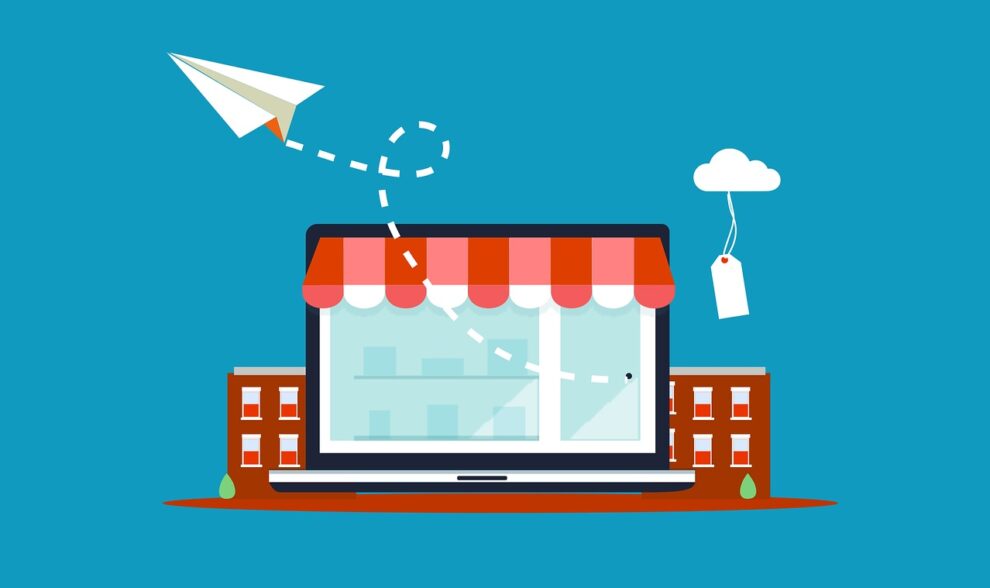So, what pops on your mind when you start brainstorming about your B2B sales strategy? ROI? Investment? Resources? Approach? Target audience? Clearly, there are poles apart components that are associated with a B2B sales strategy, just like it’s the case in B2C marketing.
In almost every case, the success of your sales will hinge upon the approach you take. Attack a situation with the wrong foot, and you’ll be doomed from the start. And as the world grapples with the COVID-19 pandemic, staying competitive means taking full advantage of sales strategies that work. But which one are those? Which approaches are essential for the success of your B2B business in this hyper-competitive, super-unpredictable environment?
Let’s take a relatively brief peep at five absolutely fundamental B2B sales strategies that will not only help your business keep up with the sweltering pandemic days, but will also help you stay ahead.
B2B eCommerce software enables B2B merchants to host eCommerce websites and generate transactions online https://virtocommerce.com/b2b-ecommerce-platform. It’s the technology that helps manage everything from inventory and sales to tax calculation, as well as streamline marketing activities. It’s basically both the initial website builder and the engine behind the scenes of the online business.
1. Align Sales and Marketing Teams to Work In Unison
A recent study reported that failure to align sales and marketing teams is one of the reasons for wasted budget and resources since up to 60 t0 70 percent of B2B content may not be used. This misalignment may also result in a lack of conversion of up to 70 percent of marketing lead.
On the other hand, the alignment of sales and marketing teams, what is now termed as ‘Smarketing,’ can increase revenue by more than 34 percent. This does not merely mean combining both departments into a single department, but rather ensuring that both work together seamlessly to close more business deals.
Since sales and marketing are combined, rather than siloed, it allows the company to track results better and make high-impact changes where necessary to increase the customer base and progress. Working in tandem, both departments can easily attract, inform, and retain customers, while playing a crucial role in the future of the company’s success. You can use a sales enablement platform to keep everyone in sync and make your processes more efficient.
Think about the problems that may arise due to misalignment:
- Irrelevant KPIs that may fail to help in boosting each team’s performance.
- Lack of a unified library, which may mean that the sales team cannot find assets to forward to prospects.
- Lack of common understanding of what qualifies as a lead, which may result in the marketing team delivering contracts that the sales department cannot close.
Remember, both the marketing and sales departments have the same objective of driving sales and boosting revenue, so it makes business sense to keep them in sync. Sales and marketing alignment is probably the largest opportunity to enhance business performance today.
2. Revitalize Your Cold Calling Solutions
Due to the way digital transformation has given consumers the power and ability to research and find solutions on the web, B2Bs, like B2C have heavily concentrated on inbound lead generations such as content marketing, SEO, pay-per-click (PPC), growth-driven website design (GDD), social media marketing, email marketing, and more. This has come at the expense of outbound lead generation tactics, such as marketing-qualified leads (MQLs) and Sales-qualified leads (SQLs), which for long have proven to be effective in driving sales.
One of the forgotten or rather ignored outbound lead generation approaches is cold calling. This lead generation stratagem has been around forever. Why? Because it works. Cold calling professionals such as SalesHive have demonstrated to numerous B2B companies that cold calling services can help them easily scale their sales development team with professional lead generation services, and ultimately improve sales.
In fact, through cold calling, you can increase both outbound and inbound leads. Through outbound prospecting, you can build awareness and pipeline by cold calling decision-makers at your top prospects and asking strategic discovery questions. In terms of inbound leads, you can increase opportunities by promptly calling and qualifying inbound website leads. Using professional and highly qualified cold calling reps to book meetings is particularly prudent during the pandemic because people are compelled to work remotely and observe COVID-19 guidelines.
3. Utilize Account-Based Selling (ABM)
Despite the popularization of ABM and its effectiveness among B2B firms and enterprise organizations, salespersons are still largely fixated on individual leads. ABM is the practice of tailoring marketing and sales strategies to specific accounts that can make a massive impact on your ROI. This strategy doesn’t place a lot of focus on thousands of followers you have on Twitter or Facebook. It’s closing the most important deals that matter, which in turn helps the company build its bottom-line faster and more efficiently.
Using this approach, one or more sales development representatives in your company will be prospecting on a specific number of pre-qualified accounts simultaneously, using multiple channels and targeting a number of decision-makers to account for these shits in the decision-making process. As such the backbone of account based-selling is account identification as well as access to key purchase intent signals.
4. Consider Solution Selling
This is where your sales team uses a sales process that is problem-led rather than product-led to determine how the marketed product could bring specific improvements that are desired by the B2B customer. In other words, the sales department will focus on diagnosing or helping identify the needs of the prospects, their challenges, as well as their goals.
Next, is recommending products or services that can help them overcome the identified challenges. This strategy works for B2B buyers because right from the beginning of the sales cycle, the prospect feels valued.
5. Focus on Repeat Business
This a no-brainer. It’s where your company focuses on generating repeat purchase from customers that you’ve conducted business with. While this may seem straightforward, it’s not. It needs to be a well-thought-out approach since existing or repeat customers normally create a new list of terms and conditions when becoming repeat customers.
This is also often influenced by the experience your customers had on the initial purchase. Nevertheless, since repeat customers are more likely to buy from you compared to prospects who are exploring your product or just checking you out on social media, it is vital to have a tactic to keep them around longer.








Add Comment